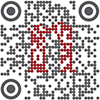| ||||||||||||||||
| ||||||||||||||||
| Hello Nature readers, | ||||||||||||||||
 | ||||||||||||||||
| A chinstrap penguin sleeps on a beach in Antarctica. (Mathias Rhode/Alamy) | ||||||||||||||||
Penguins live on thousands of microsleepsBriefing penguin-puzzle star Leif Penguinson believes in getting a solid 8 hours a night — but chinstrap penguins (Pygoscelis antarcticus) prefer a little nap. They sleep more than 10,000 times a day for an average of 4 seconds at a time. Researchers wanting to understand penguin sleep observed 14 birds over 10 days, and found that the most they ever slept for was a 34-second snooze — though the microsleeps add up to more than 11 hours of daily rest. Nature | 4 min readReference: Science paper | ||||||||||||||||
Local teams make more breakthroughsIn-person teams do more 'disruptive' science than remote groups, suggests an analysis of 20 million papers and 4 million patents published over six decades. It's not clear why this is, given that remote collaborators can benefit from greater collective knowledge. "It probably has to do something with the intensity," says economist and study co-author Carl Frey. "And the fact that, when something is tacit and when an idea isn't quite crisp yet, it's actually quite hard to communicate." Nature | 5 min readReference: Nature paper | ||||||||||||||||
Human-cell robots might help us healUsing cells from the human windpipe, scientists have developed tiny self-propelling robots that might have therapeutic properties. When researchers placed the 'anthrobots' on a layer of neural tissue that had been scratched, the neurons underneath completely healed within three days. This suggests the potential for personalized regenerative medicine, say the researchers. Nature | 4 min readReference: Advanced Science paper | ||||||||||||||||
 | ||||||||||||||||
| Each anthrobot is made up of a few hundred cells. (Gizem Gumuskaya, Tufts University) | ||||||||||||||||
| ||||||||||||||||
| ||||||||||||||||
| ||||||||||||||||
How to end the HIV/AIDS pandemic"We now have the tools and knowledge to end the HIV/AIDS pandemic as a threat to public health — and to do so by 2030," write John Nkengasong, Mike Reid, Ingrid Katz at the US AIDS-relief programme PEPFAR. The goal: to reach the '95-95-95' targets of at least 95% of people living with HIV knowing their status; at least 95% of those people being on life-saving antiretroviral therapy; and at least 95% of those people having an undetectable viral load. To get there, argue the authors, will require the use of behavioural-science approaches to reach populations that are most in need. Nature | 9 min read | ||||||||||||||||
 | ||||||||||||||||
ACCESS NATURE AND 54 OTHER NATURE JOURNALS Nature+ is our most affordable 30-day subscription, giving you online access to a wide range of specialist Nature Portfolio journals, including Nature. Nature+ is for personal use and is suitable for students. | ||||||||||||||||
Futures: Stuck in the middleA person rethinks the wisdom of investing in a robot body in the latest short story for Nature's Futures series. Nature | 7 min read | ||||||||||||||||
Five best science books this weekAndrew Robinson's pick of the top five science books to read this week includes the first systematic study of all graphical symbol systems and the surprisingly meaningful answers to ten simple questions. Nature | 4 min read | ||||||||||||||||
Quote of the day"Understanding and solving global health inequalities requires getting to the root causes of ugly social realities … What is needed is political willpower and just distribution of power and resources, not LLMs."Many researchers are feeling the pressure to jump on the bandwagon of large language models (LLMs), says cognitive scientist Abeba Birhane — and many are not considering whether technology is an appropriate 'solution' to complex, multifaceted challenges. (Nature | 10 min read) | ||||||||||||||||
| | ||||||||||||||||
| ||||||||||||||||
| | ||||||||||||||||
| Want more? Update your preferences to sign up to our other free Nature Briefing newsletters:
| ||||||||||||||||
| ||||||||||||||||
| You received this newsletter because you subscribed with the email address: manojdole1.Lens@blogger.com Please add briefing@nature.com to your address book. Enjoying this newsletter? You can use this form to recommend it to a friend or colleague — thank you! Had enough? To unsubscribe from this Briefing, but keep receiving your other Nature Briefing newsletters, please update your subscription preferences. To stop all Nature Briefing emails forever, click here to remove your personal data from our system. Fancy a bit of a read? View our privacy policy. Forwarded by a friend? Get the Briefing straight to your inbox: subscribe for free. Want to master time management, protect your mental health and brush up on your skills? Sign up for our free short e-mail series for working scientists, Back to the lab. Get more from Nature: Register for free on nature.com to sign up for other newsletters specific to your field and email alerts from Nature Research journals. Would you like to read the Briefing in other languages? 关注Nature Portfolio官方微信订阅号,每周二为您推送Nature Briefing精选中文内容——自然每周简报。 Nature | The Springer Nature Campus, 4 Crinan Street, London, N1 9XW, United Kingdom Nature Research, part of Springer Nature. |
What matters in science | View this email in your browser Monday 11 December 2023 Hello Nature readers, Today, we gaze at what might be the largest known protein, learn about the first global deal on limiting emissions from food production and discover how publishing pressures create unusually prolific authors. A structure prediction for a massive protein discovered by computational biologist Jacob West-Roberts and his colleagues. (West-Roberts, J. et al./bioRxiv ) Not...




Comments
Post a Comment